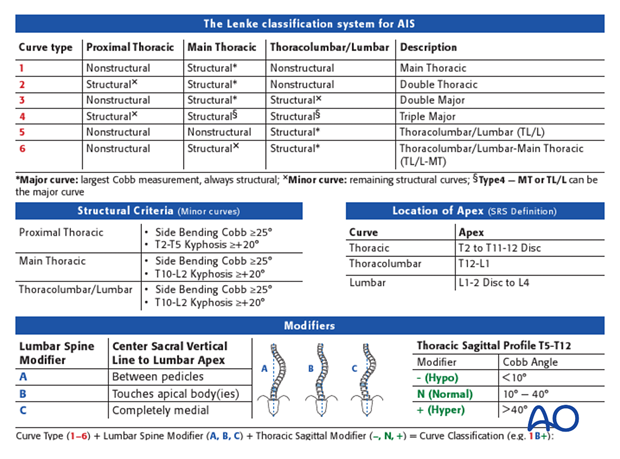Lenke classification
1. Introduction
The Lenke classification is a triad classification system consisting of:
- curve type (1-6)
- lumbar spine modifier (A, B, C)
- sagittal thoracic modifier (-, N, +)
An example of the classification may be Lenke 2A-
It provides a classification that is:
- Comprehensive – All curve types can be described using the classification.
- Two dimensional – Increased emphasis on sagittal plane alignment
- Treatment based
- Reliable – It has excellent both inter and intraobserver reproducibility
- Objective – Specific objective criteria are used for the classification
- Practical – Easily understood and used by scoliosis surgeons

To determine the components of the triad the following radiographs are required:
- upright coronal
- upright sagittal
- left supine bending
- right supine bending

2. Determination of curve type
STEP 1
The spine is divided into the 3 regions.
- Proximal thoracic – Apex at T3, T4 or T5
- Main thoracic – Apex between T6 and the T11-T12 disc
- Thoracolumar/Lumbar – Thoracolumbar apex between T12 and L1, and lumbar apex between the L1-L2 disc and L4

STEP 2
In the AP view Cobb angles are measured from cranial end vertebra to caudal end vertebra. End vertebra is defined as the vertebra that is most tilted from the horizontal apical vertebra. For a given curve the cranial end plate is used for the proximal end vertebra while the caudal end-plate is used for the distal end-vertebra.
The curve with the largest cobb angle is by definition the major curve.
Other curves are by definition minor curves.
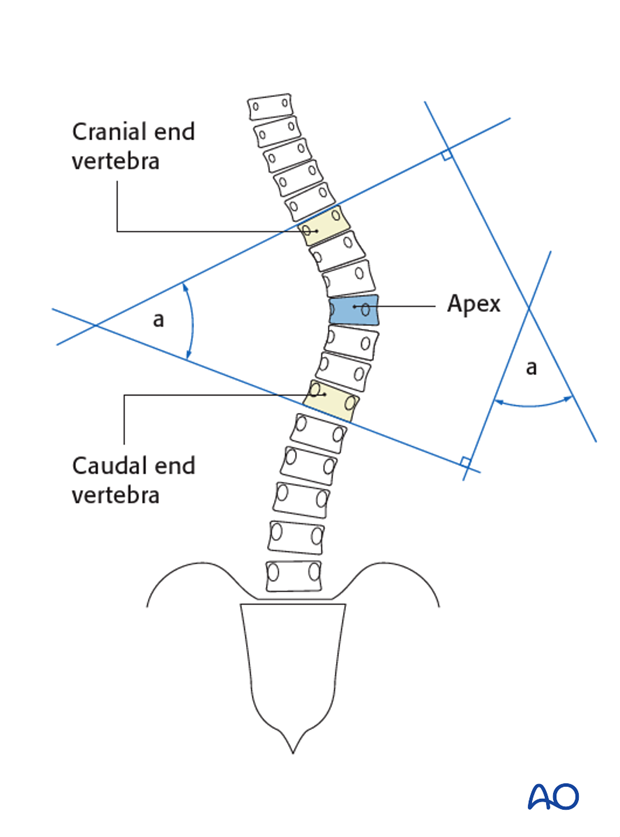
STEP 3
Using the left and right supine bending, as well as the lateral radiographs, it is determined whether the minor curves are structural or non-structural.
A minor proximal thoracic curve is defined as structural if one of the two criteria are met:
- Residual coronal curve greater than or equal to 25 ° on supine bending radiograph
- Kyphosis T2 – T5 of greater than or equal to 20 ° (regardless of coronal flexibility)
A minor main thoracic curve is defined as structural if one of the two criteria are met:
- Residual coronal curve greater than or equal to 25 ° on supine bending radiograph
- Kyphosis T10 – L2 greater than or equal to 20 ° (regardless of coronal flexibility)
A minor thoracolumbar/lumbar curve is defined as structural if one of the two criteria are met:
- Residual coronal curve greater than or equal to 25 ° on supine bending radiograph
- Kyphosis T10 – L2 greater than or equal to 20 ° (regardless of coronal flexibility)
STEP 4
The minor/major and structural /non-structural information for each curve is then used together with the table below to identify the curve type.
3. Determination of lumbar modifiers
The lumbar modifier is determined by drawing a vertical line from the center of the sacrum (CSVL).
Lumbar modifier A is designated if this line lies between the pedicles at the apical level of the lumbar curve.
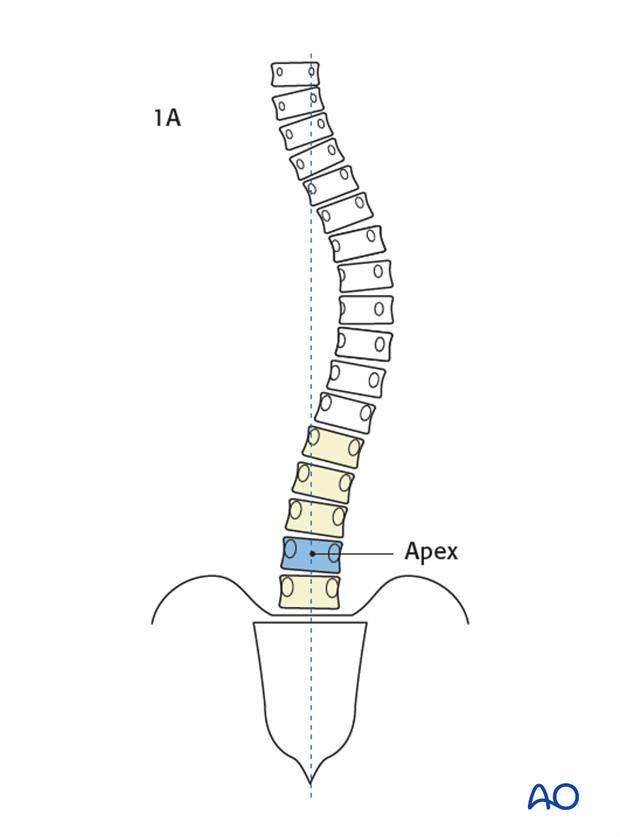
Lumbar modifier B is designated if this line touches the apical vertebral pedicle.
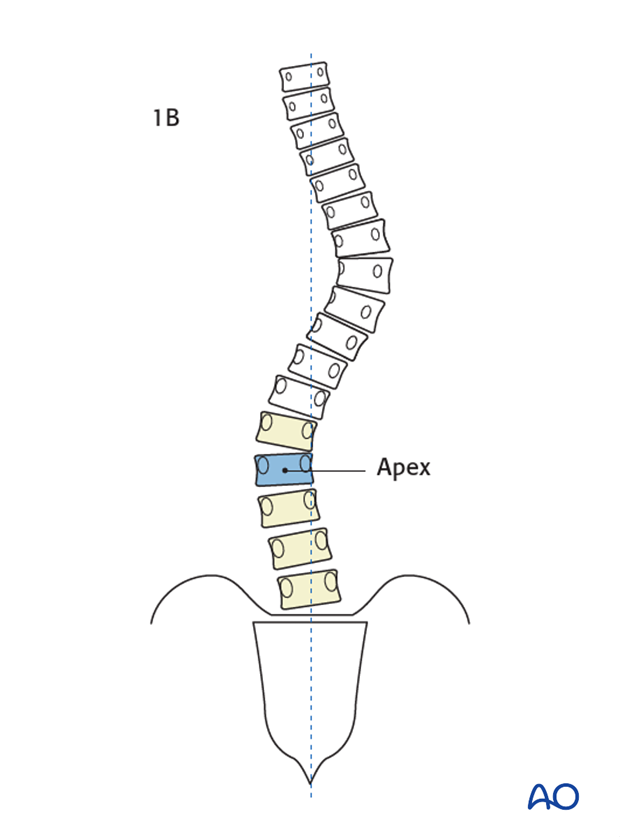
Lumbar modifier C is designated if this line does not touch any part of the apical vertebral body or pedicle.
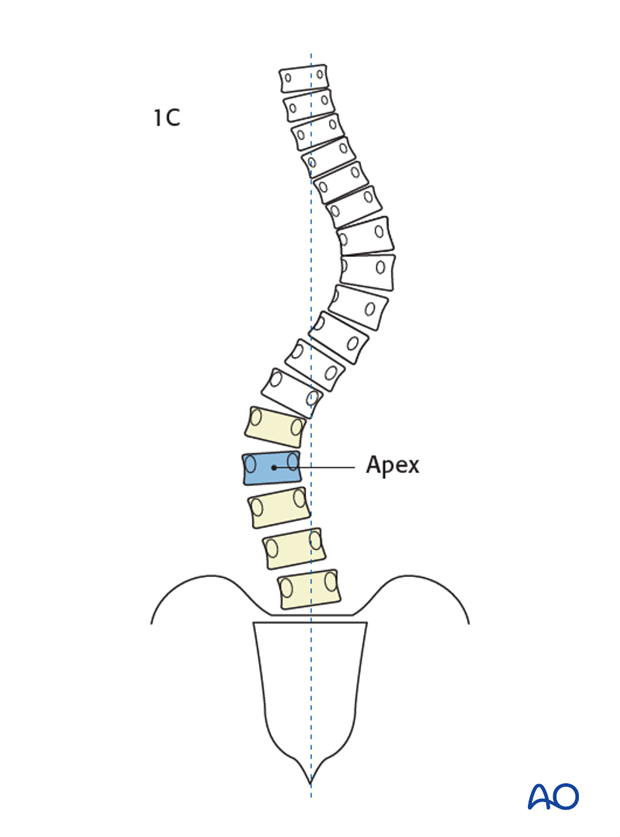
4. Determination of Sagittal modifiers
The sagittal modifiers are determined from the lateral radiograph from T5-T12. A measurement less than 10° is designated as "-" or hypokyphosis.
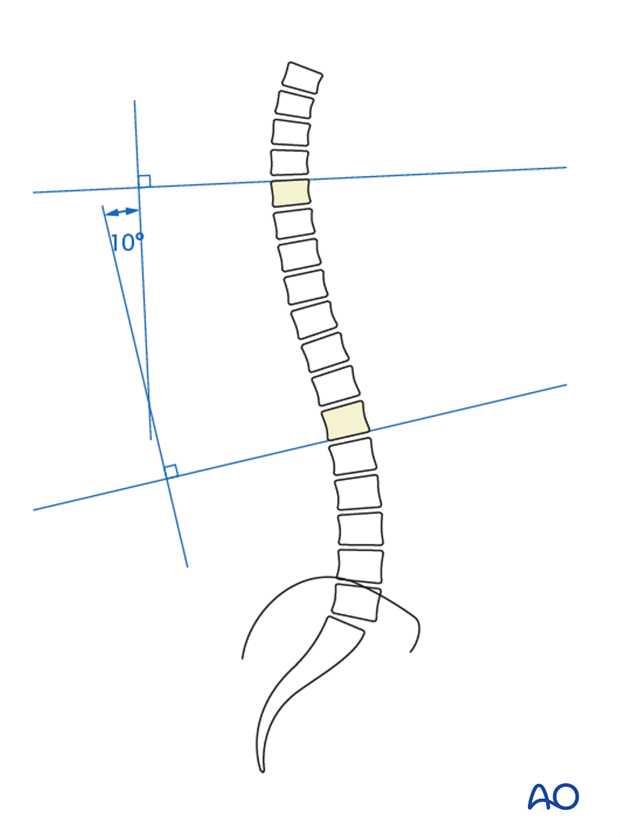
Measurements between 10°- 40° is designated as "N"or Normokyphosis.

A measurement larger than 40° is designated as "+"or hyperkyphosis.
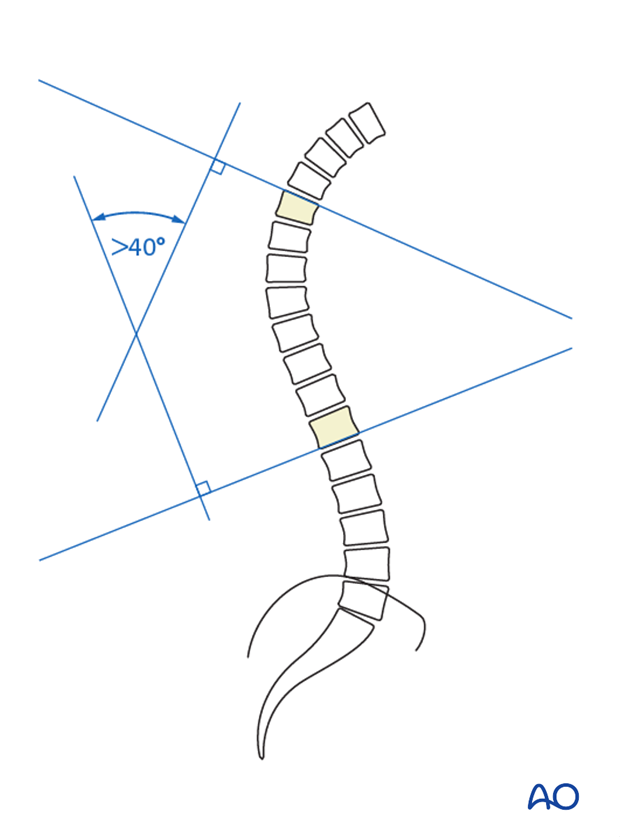
5. Table summary
This image can be downloaded as a PDF and used as a reminder during the classification.
